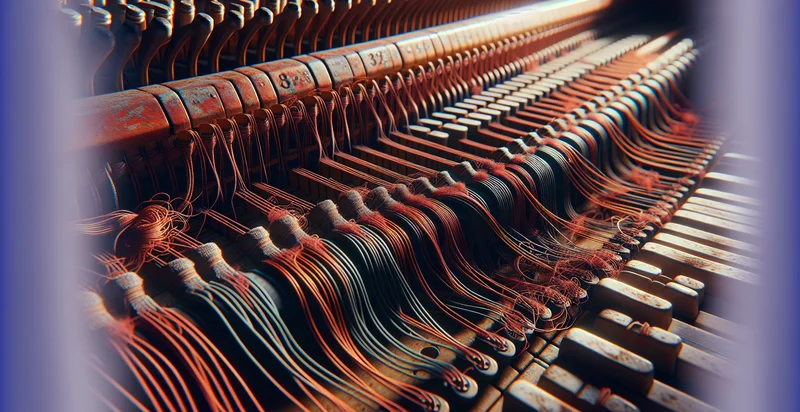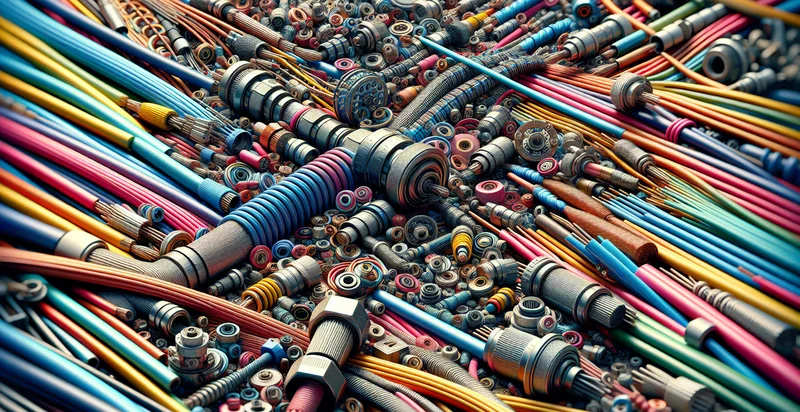Identify what material a wire is made from
using AI
Below is a free classifier to identify what material a wire is made from. Just upload your image, and our AI will predict what material a wire is made from - in just seconds.

Contact us for API access
Or, use Nyckel to build highly-accurate custom classifiers in just minutes. No PhD required.
Get started
import nyckel
credentials = nyckel.Credentials("YOUR_CLIENT_ID", "YOUR_CLIENT_SECRET")
nyckel.invoke("what-material-a-wire-is-made-from", "your_image_url", credentials)
fetch('https://www.nyckel.com/v1/functions/what-material-a-wire-is-made-from/invoke', {
method: 'POST',
headers: {
'Authorization': 'Bearer ' + 'YOUR_BEARER_TOKEN',
'Content-Type': 'application/json',
},
body: JSON.stringify(
{"data": "your_image_url"}
)
})
.then(response => response.json())
.then(data => console.log(data));
curl -X POST \
-H "Content-Type: application/json" \
-H "Authorization: Bearer YOUR_BEARER_TOKEN" \
-d '{"data": "your_image_url"}' \
https://www.nyckel.com/v1/functions/what-material-a-wire-is-made-from/invoke
How this classifier works
To start, upload your image. Our AI tool will then predict what material a wire is made from.
This pretrained image model uses a Nyckel-created dataset and has 25 labels, including Aluminum, Brass, Bronze, Carbon Fiber, Conductive Polymer, Copper, Fiberglass, Gold, Iron and Lead.
We'll also show a confidence score (the higher the number, the more confident the AI model is around what material a wire is made from).
Whether you're just curious or building what material a wire is made from detection into your application, we hope our classifier proves helpful.
Related Classifiers
Need to identify what material a wire is made from at scale?
Get API or Zapier access to this classifier for free. It's perfect for:
- Manufacturing Quality Control: In manufacturing environments, distinguishing the materials of wires is crucial for ensuring product quality. The false image classification function can automatically identify materials, reducing the risk of defects and ensuring that the right specifications are met in production.
- Recycling and Waste Management: Recycling facilities can utilize this function to efficiently sort wires based on their materials. This capability helps in maximizing the value of recycled materials by ensuring that different types of metals and plastics are properly categorized, leading to better recycling outcomes.
- Electrical Component Repair: Repair shops can employ this identifier to quickly ascertain the type of wire used in electronic devices. This information speeds up the repair process by allowing technicians to select appropriate replacement parts and ensuring compatibility with existing systems.
- Home Improvement and DIY Projects: Consumers engaged in DIY electrical projects can use this function to identify wire materials in their homes or from various sources. This knowledge helps individuals to safely select the right cables for their projects, enhancing safety and compliance with electrical codes.
- Energy Sector Applications: Companies in the energy industry can implement this function for inventory management of electrical wires used in installations and maintenance. By recognizing wire materials, businesses can optimize supply chains and ensure that they use the most efficient materials for energy transmission and distribution.
- Quality Assurance in Telecommunications: Telecommunications companies can leverage this function to verify the materials used in cabling systems. Identifying material types can help in maintaining the integrity and performance of communication lines, ensuring high-quality service delivery.
- Educational Purpose in Technical Schools: Technical training institutions can integrate this function into their curriculum to educate students about different wire materials. By employing this technology, students can gain hands-on experience in material identification, preparing them for future careers in electrical engineering or related fields.


